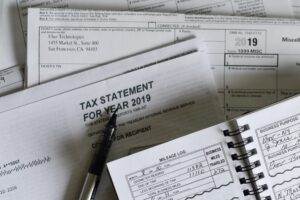

Tax Sampling Under IRS Revenue Procedure 2011-42
The first article linking the use of statistical sampling techniques in the field of accounting was published almost 100 years ago in 1927, discussing the use of ad hoc sampling for auditing. It was many years before rigorous methods for statistical sampling were applied to accounting processes, and the accounting profession began discussing it in earnest in 1962. The key feature of statistical sampling, distinguishing it from ad hoc, or purposive sampling, is that it makes possible the calculation of the uncertainty and reliability of the sampling process itself. Zoom forward to 2020, and this fundamental advantage offered by statistical sampling and systematic uncertainty metrics has been deployed in different ways, but most recently as a way to calculate items for inclusion in federal tax returns.
The Internal Revenue Service (IRS) has long allowed the use of statistical sampling by taxpayers for a limited number of tax-related activities and itself uses statistical sampling when conducting audits of tax returns. On September 12, 2011, the IRS issued Revenue Procedure 2011-42, which—for years ending on or after August 19, 2011—allows taxpayers who meet a set of criteria for establishing the validity of a statistical sample use statistical sampling to establish the value of any amount to be used on a tax return as long as no easily obtainable value already exists in the books and records. This revenue procedure establishes a safe harbor for the use of statistical sampling methodology and presents an opportunity for streamlining tax calculations, or making calculations that were not feasible before. Here are 5 ways statistical sampling saves time and expense to complete a business tax return.
-
- Calculate the value of meals and entertainment
- Calculate the costs of repairs and maintenance
- Determine basis computations
- Determine inventory
- Estimate transfer pricing
Larry Campbell, CamBright Research Principal and Lead Statistician, has the unique qualification of being both a card-carrying sampling statistician and, in a prior career, a Certified Public Accountant. His advanced training has allowed him insight both to sampling techniques as well as to understanding where sampling can help businesses work more efficiently in computing their taxes.
Larry conducts short video chats on the use of statistical sampling in accounting processes. Contact Larry at [email protected] to see how sampling might work for you.